Stephanie Kilgast
Your sculptures seem to grow organically from discarded human-made objects. What initially inspired this fascinating fusion between the artificial and the natural?
Around 2014, I learned about the environmental impact of meat production from a friend, which opened a door of realization and change in my own life. I gradually became mostly vegan and rethought all my consumption habits. Until that time, my work consisted of creating miniature replicas of food, but the moment I saw the world differently, I needed to talk about it somehow in my work.
In 2015, I decided to sculpt one miniature fruit or vegetable every day, in order to showcase the great variety of edible plants and talk about the environmental impact of meat production, but in a positive light. I consider this to be my first artwork, as it linked personal worldview, technique, and aesthetics.
After that, I was a bit at a loss on how to approach that topic differently. I rapidly settled on creating representations of a growing nature onto something that symbolically represented human activities. At first, I tried sculptural paintings, and the human recklessness was represented by abstract painting. But eventually, I decided to put the growth on an empty jam jar and it clicked.
Growth on human-made objects. It made perfect sense, nature taking over what we leave in our wake. I started this series in 2017 and it has evolved by using various trash and thrifted objects, expanding in my paintings into landscapes that showcase buildings or machines that are being overgrown.
I always strive to find a balance between the object and the growth, as for me this balance is what we have lost, and what is so crucial for us to find back.
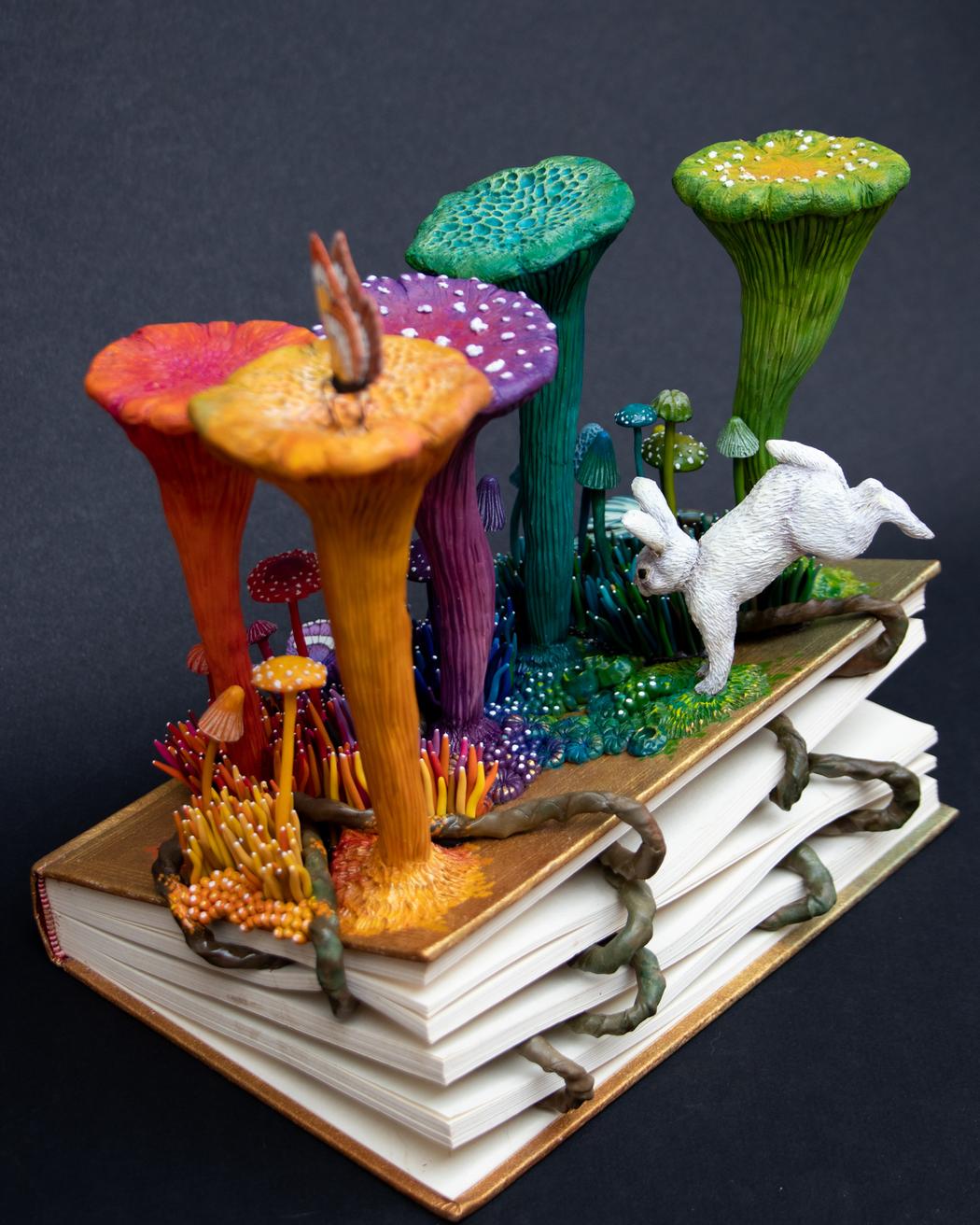 Stephanie Kilgast | Alice Following the white rabbit | 2023
Stephanie Kilgast | Alice Following the white rabbit | 2023
Many of your works have a “cheerful post-apocalyptic” feel, as you describe. What does that phrase mean to you emotionally and philosophically?
In my artwork, humans are gone, leaving their objects, buildings, and trash behind; that’s the post-apocalyptic part. And in those ruins, nature has created new environments for other animals to live in, thus creating a beautiful vibrant world, rich in life. It’s cheerful and hopeful. It reminds us that nature has the capacity of growing back, of regaining its place on this planet, making it not only beautiful but hospitable.
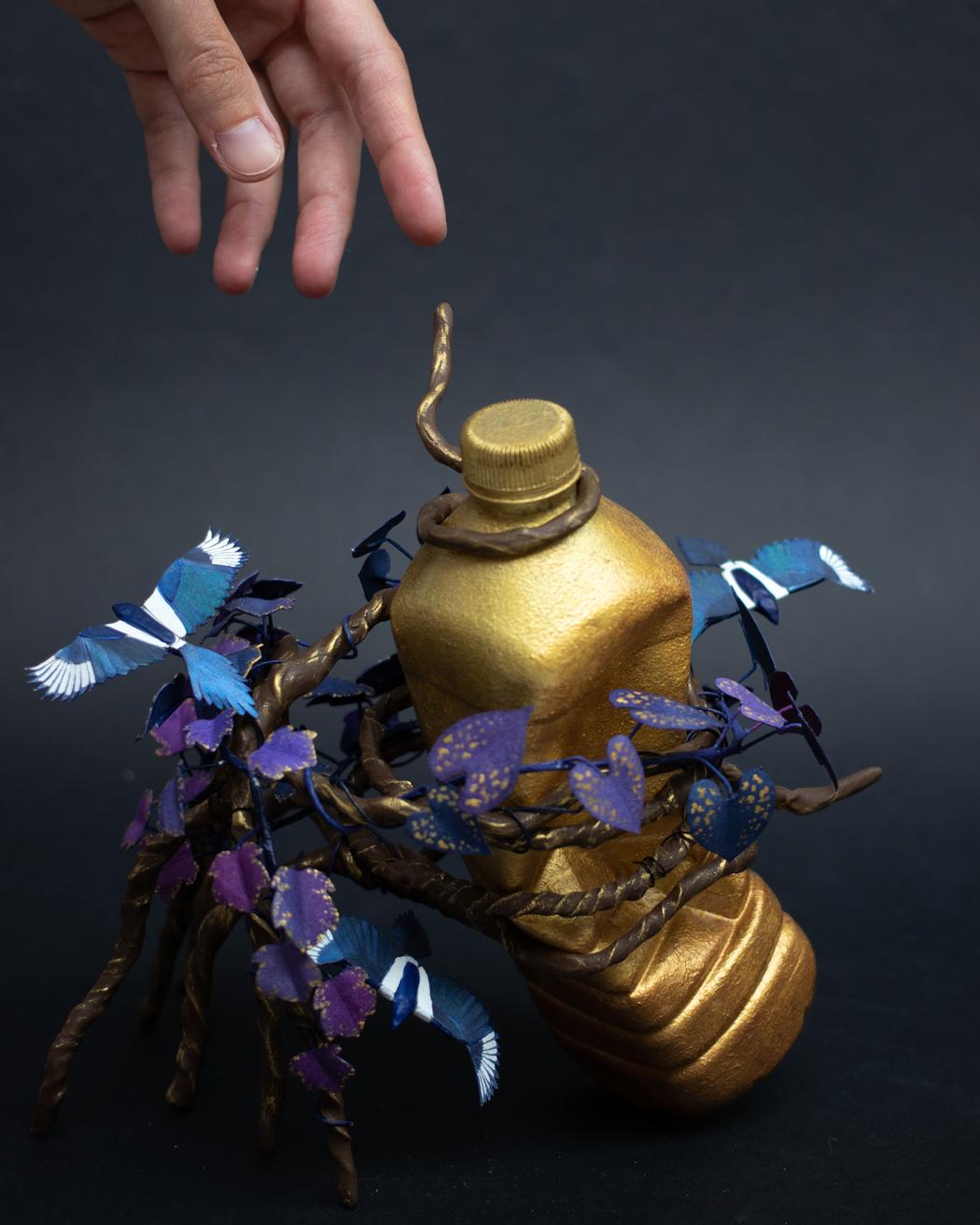 Stephanie Kilgast | All That Glitters | 2023
Stephanie Kilgast | All That Glitters | 2023
You transform objects of waste into living, colorful ecosystems. Do you see this as a metaphor for hope, renewal, or resistance?
Absolutely. I always find that reassuring to remember, that nature always finds a way to bounce back. We might not be part of that future, but life will keep on going, somehow.
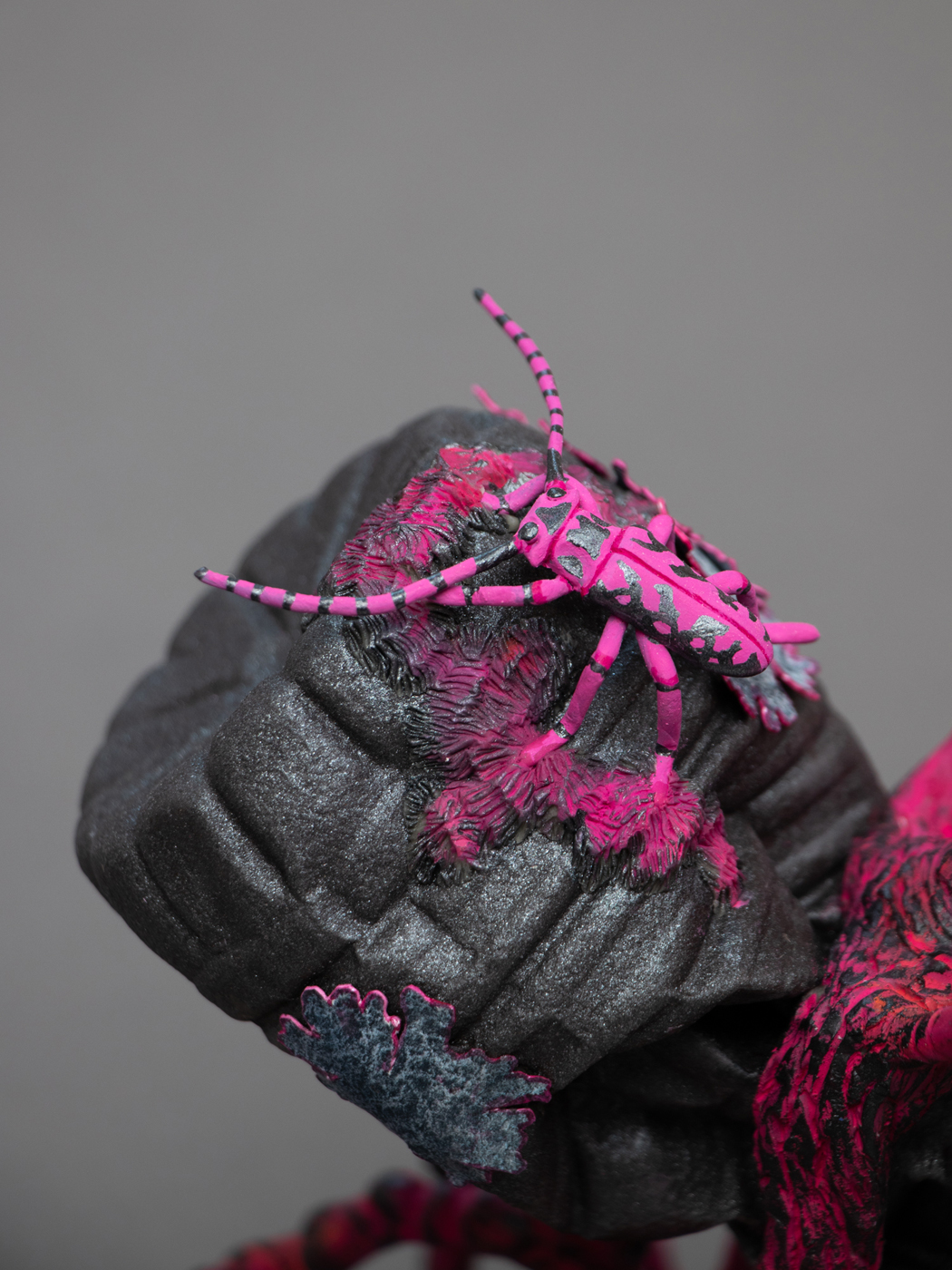 Stephanie Kilgast | Bloom | 2024
Stephanie Kilgast | Bloom | 2024
Could you tell us more about your creative process — how do you select the objects that will become the base for your sculptures?
I tend to keep trash that is interesting, especially when I travel. I often have to refrain myself from taking all the trash back home. And then I enjoy flea markets and similar second-hand shops, the really cheap ones, where it’s a jumble of objects nobody really wants anymore. I just browse and pick up things that spark something. Sometimes I have a very clear idea in my head, for instance, right now, I have collected a lot of empty boxes, as I plan to create a show around those. But sometimes I just see an object and I grab it because I see potential. Same for my paintings, I often work using photography I take when traveling or walking around, and it’s about keeping an open eye for something that picks my interest.
Your textures and patterns are incredibly detailed. How long does it usually take to complete one sculpture, and what materials or techniques do you use most often?
The bare minimum for a sculpture is two weeks, and that is if everything runs smoothly. More often than not, it will stretch over a month, because I’m unsure about certain shapes or colors. I tend to fight with my artworks until it works. The longest I actively tried to figure out a sculpture was 6 months, I just couldn’t find the correct colors nor materials, so I kept changing until it finally worked out.
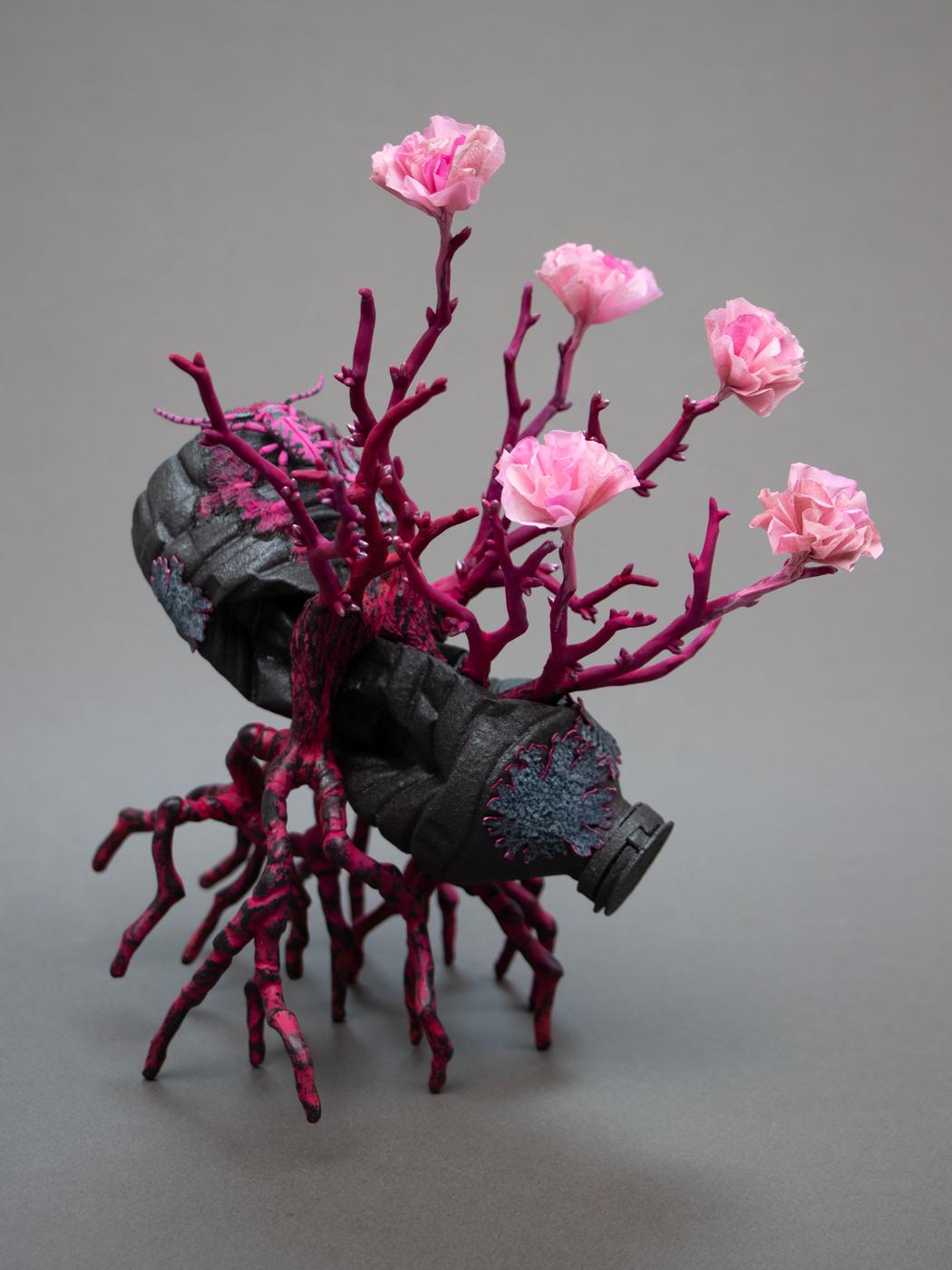 Stephanie Kilgast | Bloom | 2024
Stephanie Kilgast | Bloom | 2024
The color palette in your works feels almost bioluminescent. How do you approach color — is it intuitive, symbolic, or both?
It’s not symbolic, I’ve always been too lazy to look into the symbolism of colors. I just really like colors, so it’s more intuitive and by phases. Sometimes I cannot get enough of a certain color combination, so it will pop up in every artwork I create. I really enjoy painting with colors, be it 3D or 2D, it just makes me so happy.
Using such vibrant colors has a double reasoning: first, it’s about hope in my work. Since the topic is dark, I want to keep the spirits up, nothing worse than losing hope, as it paralyzes and nothing can change. Second is personal: my joy of using so many colors. Seeing colors makes me happy, so in a way I communicate with others through my work with details and colors. I like those, so I reach out to people who will enjoy these as well.
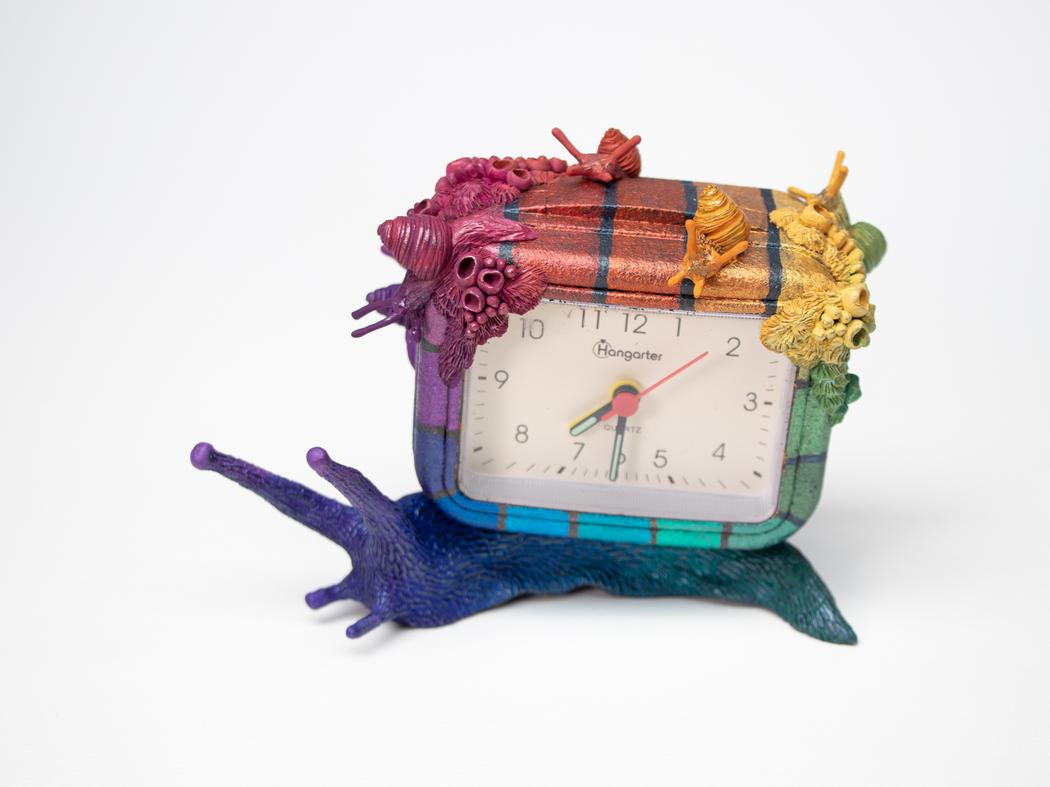 Stephanie Kilgast | Chi Va Piano | 2024
Stephanie Kilgast | Chi Va Piano | 2024
Do you consider your art more of a personal meditation or a form of activism?
A bit of both. I like to delude myself into thinking my work will have some meaningful impact, but deep down, I think it’s mostly a way to process a global issue.
But it’s not really activism, as I’m not trying to preach anything. Sure, I tend to encourage consuming less, but I would not write it in caps on my artwork. It’s more about talking about a contemporary problem we face as a society, but through my lens. It’s a way of questioning more than anything else — and also a way to attract attention to the beauty of nature, especially the more forgotten species, like lichen, fungi, or insects.

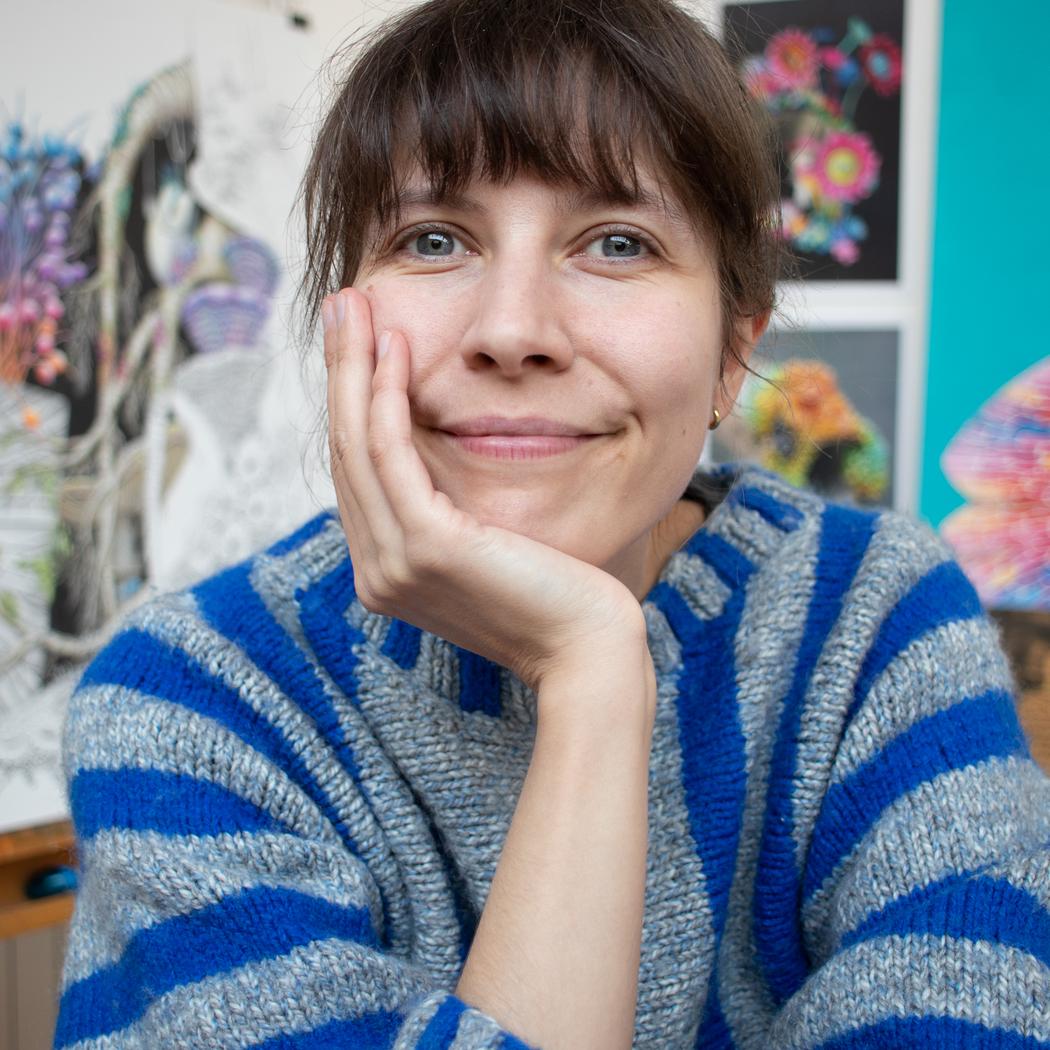
Leave a Reply